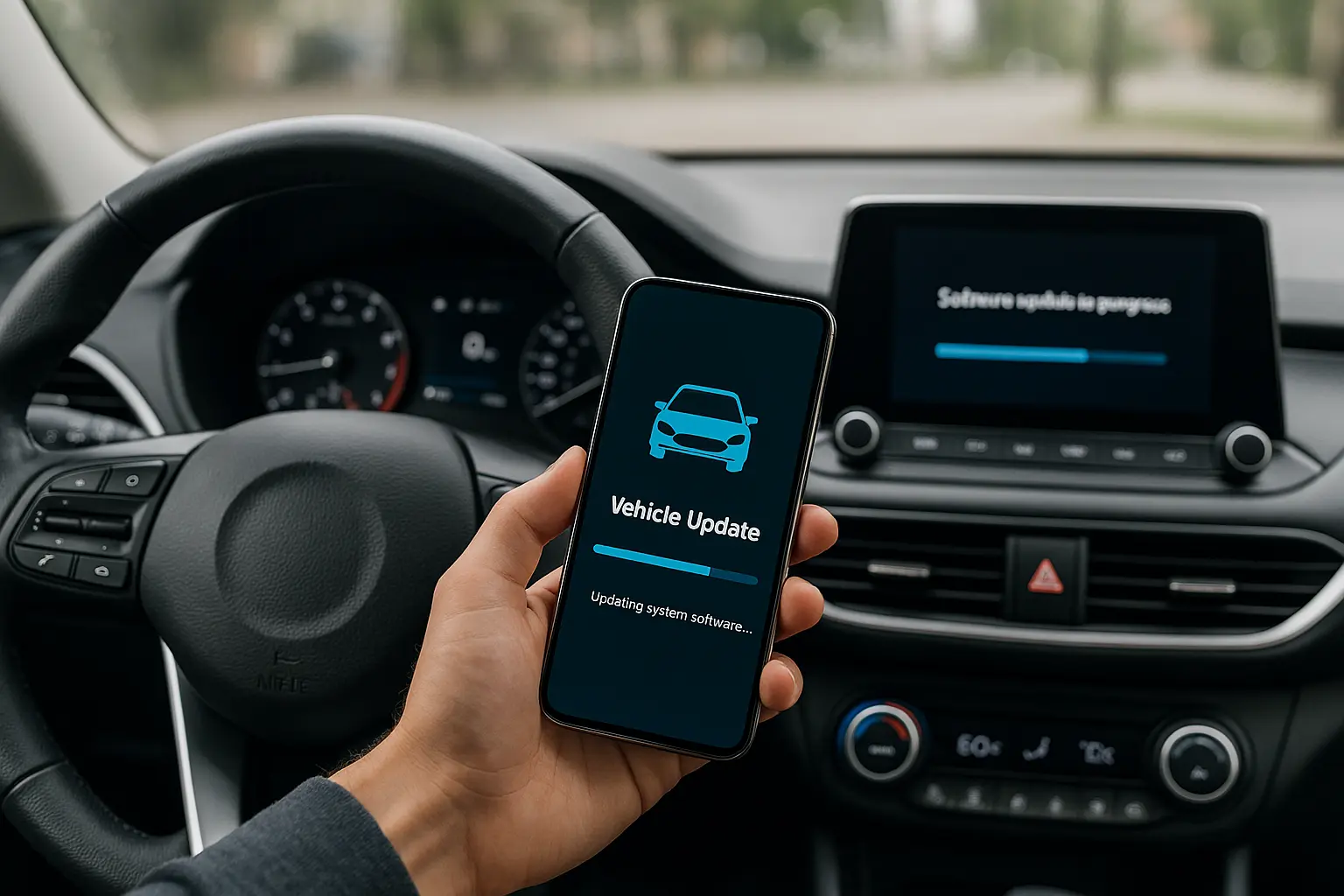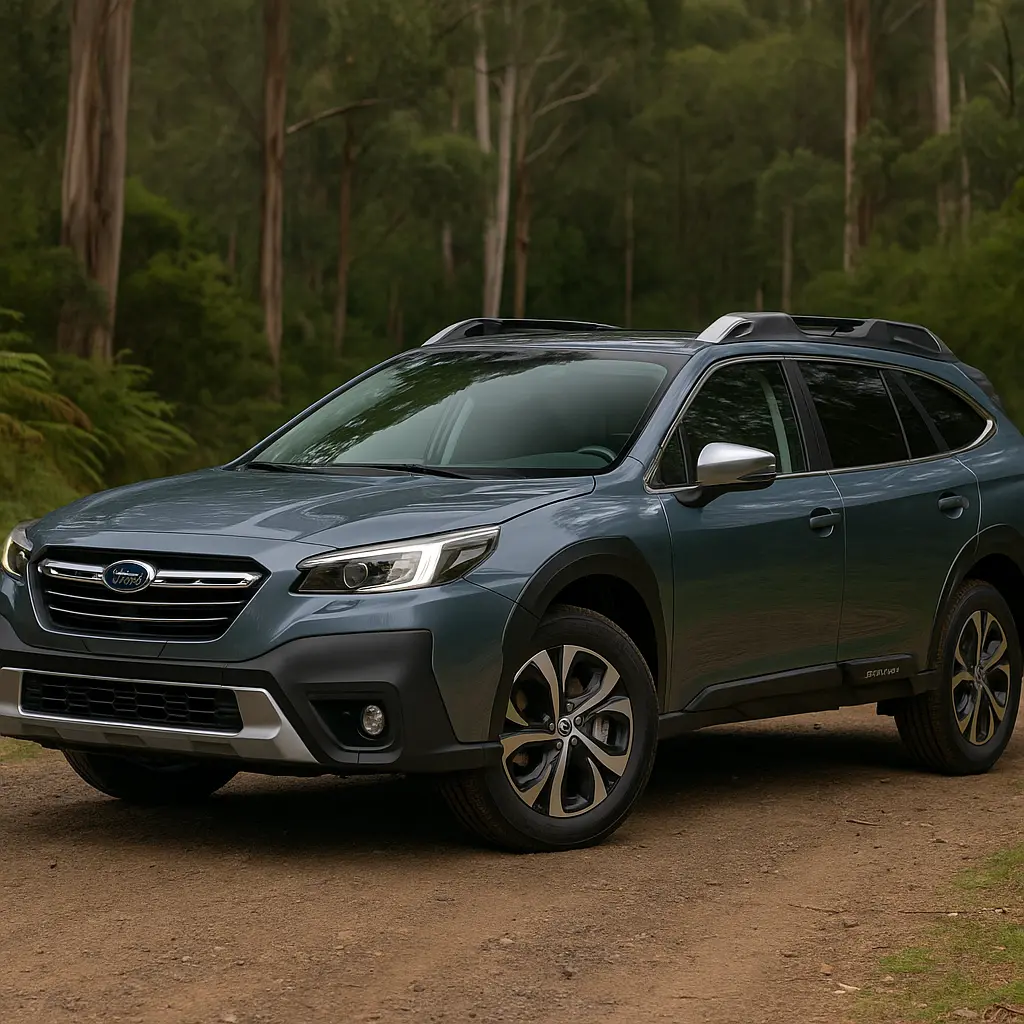🚗 What Are Vehicle Over-the-Air Updates?

Vehicle over-the-air (OTA) updates refer to the wireless delivery of software upgrades and patches directly to your car’s onboard systems without visiting a service centre. Much like how smartphones get updates while charging at home, connected vehicles in 2025 now receive these upgrades remotely—often overnight.
From infotainment systems and battery management in EVs to advanced driver-assistance features, OTA updates are reshaping the car ownership experience. And in 2025, Australia is seeing a major uptick in vehicles equipped with this tech.
🔧 How OTA Works: Breaking Down the Tech
Here’s a simplified breakdown of how OTA updates work in modern vehicles:
Data Connection
Most modern cars are fitted with embedded SIM cards or eSIMs that connect to mobile networks. These enable the vehicle to stay connected to the manufacturer’s servers.Secure Server Sync
Car manufacturers host update packages on secure cloud servers. Once an update is ready, it's pushed to your vehicle wirelessly over the internet.Download and Validation
The update downloads in the background (while driving or parked). Once complete, the car’s system verifies its integrity and authenticity.Installation
Installation typically happens when the car is idle—like overnight. Some updates may require driver confirmation or vehicle restart.System Reboot and Logging
After installation, the system reboots and records logs to confirm successful implementation. You’ll often get a notification confirming the update.
🛠️ What Can Be Updated Over-the-Air in 2025?
Here’s what’s now OTA-upgradable in modern 2025 cars:
1. Infotainment Systems
Navigation maps
Apple CarPlay/Android Auto enhancements
Touchscreen UI updates
Voice assistant upgrades
2. Battery Management and Range Optimisation (EVs)
Charging curve improvements
Battery preconditioning tweaks
Efficiency enhancements
3. ADAS & Safety Features
Adaptive cruise control refinements
Emergency braking system calibration
Lane-keeping and blind-spot monitoring updates
4. Performance Tweaks
Throttle response
Transmission behaviour
Steering weight adjustments
5. Bug Fixes & Security Patches
Software glitches and security vulnerabilities
Data protection enhancements
Connectivity stability improvements
🧠 Benefits of OTA Updates for Aussie Drivers
No Dealership Visit Needed
No more booking appointments for minor software fixes—OTA makes it all seamless.Lower Ownership Costs
Updates that improve efficiency can save money on fuel or electricity consumption.Real-Time Feature Enhancement
Cars improve over time, gaining features months or years after purchase.Improved Safety Without Delays
Safety recalls and updates can be implemented immediately, reducing the time you're at risk.Better Resale Value
A well-maintained, constantly updated car will hold better value in Australia's used car market.
⚙️ OTA in Action – Real-World Examples
🔹 Tesla
Tesla is the pioneer. Their 2025 Model Y and Model 3 Highland variants now get regular updates, including “Acceleration Boost,” FSD Beta trials, and sentry mode improvements—downloaded and activated remotely.
🔹 Ford
The Ford Mustang Mach-E and new Ranger Raptor support OTA updates for BlueCruise, infotainment, and even lighting systems.
🔹 Hyundai/Kia
OTA-capable Ioniq 6 and Kia EV9 let you update everything from navigation to advanced safety features. Hyundai’s “Feature on Demand” lets you subscribe to add-on features after purchase.
🔹 BMW
BMW’s Remote Software Upgrade (RSU) in 2025 adds features such as heated seats on-demand, digital key upgrades, and iDrive UI enhancements.
🌐 OTA and the Connected Car Ecosystem
OTA updates are a central part of the connected car ecosystem, which includes:
Telematics Systems: To collect driving and diagnostics data.
Cloud-Based Services: Manufacturers analyse fleet-wide data to improve future updates.
V2X Communication: Vehicles receive OTA updates to remain compatible with new vehicle-to-everything protocols like smart traffic systems.
Smartphone Integration: Apps like MyMazda, FordPass, or Tesla App allow update monitoring and manual installations via your phone.
🔒 Is It Safe? Cybersecurity & OTA
Security is a big concern for connected vehicles. In 2025, leading manufacturers employ:
End-to-End Encryption
Data is encrypted between server and vehicle.Digital Signatures
Updates come with authentication to avoid spoofing.Sandboxing
New updates are tested in isolated environments within the car system before full application.Rollback Capability
In case something goes wrong, vehicles can revert to the previous stable version.
📉 Challenges of OTA Updates in 2025
While the benefits are vast, OTA still faces some challenges:
Network Connectivity
Remote Australian regions may lack sufficient 4G/5G coverage for seamless OTA updates.Storage and Processing Power
Older models or budget cars may lack the hardware to support large updates.Data Costs
While most manufacturers absorb data costs, this could change or vary by region.Consumer Awareness
Many Aussie drivers still don’t know their car is OTA-capable—or how to enable it.Update Errors
Interrupted downloads or power loss during updates can occasionally cause malfunctions.
🕹️ Feature on Demand: A New Trend in 2025
A hot topic in 2025 is “Feature on Demand”—an OTA-powered subscription model.
Examples:
Heated seats or steering wheel can be activated via monthly fees.
BMW and Mercedes-Benz are offering performance upgrades that can be toggled with a subscription.
Polestar allows buyers to unlock additional horsepower through OTA.
Pros:
Lets you customise your car as needed.
Spread out costs instead of paying upfront.
Cons:
Feels like manufacturers are “locking” features already built-in.
Concerns about long-term affordability.
🛠️ Can All Cars Get OTA in 2025?
No. OTA requires specific hardware and software frameworks. Typically:
EVs and Premium Models: More likely to support OTA by default.
2023+ Vehicles: Most newer models from major brands now ship OTA-ready.
Older or Budget Cars: Usually require manual updates via USB or dealer service.
Still, brands like Toyota and Mazda are gradually introducing OTA into mid-range models.
🏁 The Future of OTA – What’s Next?
OTA is evolving rapidly. Expect the following in the next few years:
Autonomous Driving Readiness
OTA will play a crucial role in improving and certifying autonomous driving systems.OTA for Hardware Diagnostics
AI-powered updates could detect potential hardware failures and alert owners before breakdowns.Car-to-Grid OTA Integration
Electric cars with bidirectional charging will receive updates to optimise energy exchange with the grid.Third-Party Apps and Features
Just like smartphones, cars could soon allow downloadable apps from a marketplace ecosystem (e.g. navigation, entertainment).
💡 Tips for Aussie Drivers: Making the Most of OTA
Keep Your Car Connected
Ensure your car’s modem is active or paired with Wi-Fi at home.Check Manufacturer App
Regularly monitor update availability through your car’s mobile app.Enable Auto-Install (If Available)
Let your car automatically install critical updates when parked.Back-Up Preferences
Some updates may reset audio, seat memory, or driving preferences.Understand Your Subscriptions
Know what features may require ongoing payments.
🧾 Final Thoughts
Vehicle over-the-air (OTA) updates are no longer futuristic—they’re the new standard for modern car maintenance, improvement, and personalisation. Whether it’s enhancing safety, refining performance, or adding brand-new features, OTA keeps your vehicle evolving long after you’ve driven it off the lot.
In 2025, Australian drivers stand to gain massively from embracing this tech, especially as more brands integrate OTA into everything from hatchbacks to high-end EVs. Stay updated—literally—and your car will keep improving for years to come.
Leave a comment
Your email address will not be published. Required fields are marked *




















